Landscape architects favor SketchUp for its user-friendly interface. SketchUp enables rapid prototyping, a critical factor in landscape design. Data from user surveys indicates a satisfaction rate exceeding 90% among landscape architects. Another popular choice, AutoCAD, excels in precision drawing. Surveys reveal that professionals appreciate AutoCAD for its accuracy in creating detailed site plans.
Revit stands out for its collaborative tools. Projects involving multiple stakeholders benefit from Revit's shared model approach, enhancing team coordination. Users report a 25% improvement in project delivery times when using Revit's collaboration features. Conversely, Rhino excels in complex surface modeling. Landscape architects often use Rhino for its versatility in designing intricate landscape features. Feedback from users highlights Rhino's ability to handle challenging geometries with ease.
In contrast, Arcadium emerges as a user-friendly alternative for both professional landscape architects and non-professional users. Unlike the complexity of Rhino or the detailed precision requirement in AutoCAD, Arcadium simplifies the process of creating 3D house plans. Users can design detailed interior layouts within minutes, showcasing Arcadium 3D's ease of use and accessibility for non-professionals seeking quality design tools.
Contents:
Top Picks for Landscape Architects: 3D Home Modeling Software
Which software stands out for creating realistic landscapes? Programs equipped with advanced rendering capabilities excel. These applications transform basic sketches into lifelike scenes, employing algorithms to simulate natural lighting, shadows, and textures. Users appreciate the seamless integration of flora such as trees and shrubs, water bodies like ponds and streams, and terrain elements including hills and valleys.
What makes certain software user-friendly for landscape architects? Solutions offering intuitive interfaces and drag-and-drop functionality rank highly. These systems facilitate the design process, making it accessible to both novices and experts. Tools for automatic topography adjustments save time, enabling professionals to focus on the creative aspects of their projects.
How do these applications support collaboration? Some top picks include features for sharing projects in real-time. This functionality fosters teamwork, allowing architects, designers, and clients to make collaborative decisions. Cloud-based storage and synchronization ensure that team members can access the latest versions of a design, regardless of their location.
In terms of versatility, some software provides a broader range of plant species and hardscape materials than others. This diversity allows landscape architects to tailor each project to their client's specific desires, creating a customized outdoor space. Programs offering extensive libraries of environmental conditions – from different climates to times of day – enable more accurate representation of how a landscape will look and evolve over time.
Essential Features to Look For in 3D Modeling Software
What defines the ideal 3D home modeling software for landscape architects? Key functionalities that enhance both design efficiency and creativity. High-quality rendering capabilities enable architects to produce more lifelike visuals, while intuitive user interfaces simplify the process, making the software accessible for professionals at all skill levels. Comprehensive libraries of objects, such as plants and outdoor furniture, allow for detailed and accurate representation of outdoor spaces.
How important are collaboration tools in 3D modeling software? Absolutely critical. Features like cloud sharing and real-time editing facilitate teamwork, allowing multiple users to work on a project simultaneously. This collaboration ensures a project benefits from diverse expertise, resulting in a more comprehensive and refined design. Tools that support feedback and annotation streamline communication among team members, making the revision process faster and more efficient.
Why should landscape architects seek software with customizable features? Flexibility in design is paramount. Software that offers customizable templates and adjustable settings empowers architects to tailor their projects to specific client needs. This adaptability leads to more personalized and innovative designs, as architects are not constrained by the limitations of the software. Moreover, the ability to modify environmental settings–such as lighting and weather conditions–helps in creating designs that are not only beautiful but also realistic and functional.
In evaluating software, the presence of advanced simulation tools distinguishes the more superior options. Software that simulates natural environmental conditions, like sunlight patterns and water flow, provides a more accurate depiction of how a landscape will interact with its surroundings over time. These simulations aid in making informed design decisions that consider the long-term sustainability and maintenance of outdoor spaces. Software offering extensive support and training materials empowers users to fully utilize all available features, thereby maximizing the software's potential in creating comprehensive and detailed landscape designs.
User-Friendly 3D Software Options for Beginners
Are you searching for a way to embark on your landscape architecture projects without getting overwhelmed by complexity? Several 3D home modeling software options excel in simplicity, making them perfect for those new to the field. These programs often feature intuitive interfaces, straightforward tutorials, and a wealth of resources for learning. Beginners find these tools significantly less intimidating, allowing for a smoother learning curve.
Do you worry about finding software that doesn’t sacrifice power for ease of use? Rest assured, options exist that balance user-friendliness with robust capabilities. These applications include a variety of tools for detailed modeling, realistic rendering, and comprehensive project planning. Users can create intricate designs, lush landscapes, and detailed structures without needing advanced technical knowledge.
Is cost a concern when exploring these software options? Fortunately, user-friendly software often comes with multiple licensing options, catering to different budget needs. Some offer free versions with basic functionalities, ideal for those just starting out or working on smaller projects. Others provide subscription models or one-time purchase prices, allowing users to select the most economical path for their circumstances.
In terms of getting started quickly and efficiently, user-friendly 3D software options for beginners outshine their more complex counterparts. They demand less time for mastering basic operations, enabling new users to produce workable models and designs promptly. The availability of extensive support and learning materials directly contributes to a more enjoyable and less frustrating experience, fostering a more creative and productive environment for novices in landscape architecture.
How vital are software integration capabilities for landscape architects? Exceptionally crucial. These features allow seamless interoperability between various design and architectural platforms, enhancing workflow efficiency. For example, compatibility with CAD (Computer-Aided Design) applications and GIS (Geographic Information Systems) tools facilitates a more comprehensive approach to landscape design, combining detailed architectural plans with geographic data.
What benefits do integrations between 3D modeling software and project management tools offer? Significant improvements in project delivery timelines. By linking 3D modeling software with project management applications, architects can track progress, manage tasks, and communicate updates directly within the design environment. Tools such as task schedulers and progress trackers become indispensable for maintaining project momentum, ensuring that all stakeholders are aligned and informed.
Does integration with environmental simulation software impact design quality? Absolutely. When 3D home modeling software interfaces effectively with environmental simulation tools, architects gain insights into how natural elements like sunlight, wind, and water will interact with their designs. This capability allows for the optimization of buildings for energy efficiency, durability, and comfort, providing clients with structures that are not only aesthetically pleasing but also environmentally considerate and cost-effective over the long term.
In the sphere of landscape architecture, software that offers robust integration capabilities stands out significantly from those that do not. These platforms enable architects to merge designs with real-world contexts, predict environmental impacts, and streamline project management, thus delivering superior solutions. The breadth of integrable tools–from CAD systems for intricate design work to environmental simulators for sustainability assessments–equips architects with a comprehensive toolkit for innovative and efficient design creation.
Advanced Rendering Techniques in Home Modeling Software
Why do advanced rendering techniques matter in home modeling software? They transform basic models into realistic visualizations. Advanced rendering allows architects to apply textures like wood, glass, or stone, accurately representing their physical counterparts. Light simulations mimic natural and artificial sources, enhancing the visual accuracy of the designed space. Shadows and reflections become tools for realism, not mere graphical elements.
What benefits do these techniques offer to landscape architects? They facilitate better client communication. By showcasing designs in lifelike scenarios, architects bridge the gap between technical drawings and clients' understanding. Visualization of lighting effects during different times of the day or seasons demonstrates functionality and aesthetic appeal under varying conditions. Such detailed previews enable clients to appreciate the vision and intricacies of the design before ground is broken.
How do advanced rendering options vary across software? Some tools specialize in photorealistic renders, employing algorithms that mimic the physics of light. Others excel in artistic renderings, offering a broader palette for conceptual and stylistic expression. The choice of software often depends on project requirements and the designer's preferred balance between realism and conceptual illustration. Features like real-time rendering and virtual tours offer immersive experiences, allowing for on-the-fly adjustments and instant client feedback.
In evaluating software, those with superior rendering capabilities invariably provide a competitive edge. They facilitate a quicker transition from concept to client approval. Software enabling real-time changes expedites design development, eliminating lengthy re-rendering processes. Greater detail in textures and materials results in more compelling presentations, securing client buy-in with less effort. Thus, for landscape architects, investing in the right software transcends mere expense, becoming a pivotal factor in project success and client satisfaction.
Cost Analysis: Free vs. Paid 3D Modeling Software
Why consider free 3D modeling software? Cost-effectiveness tops the list of advantages. Users can access basic features without financial outlay, allowing for exploration and basic design tasks. Free versions often serve as gateways, offering a glimpse into the software's capabilities without initial investment. However, these versions may lack advanced features, such as customizability, high-resolution textures, and comprehensive support services.
What makes paid 3D modeling software appealing? Professional-grade tools and resources are the hallmarks. Subscribers gain access to a suite of advanced features, including precise modeling tools, extensive libraries of textures and objects, and premium customer support. These services enable landscape architects to produce detailed, high-quality models that meet client expectations and industry standards. Paid software often includes regular updates and enhancements, ensuring users stay at the forefront of technological advancements.
How do users benefit from investing in paid versions? Enhanced efficiency and professionalism. The depth of resources available in paid software streamlines the design process, from conception to completion. High-end features enable the creation of more sophisticated, accurate models. This investment ultimately saves time and elevates the quality of the final product, distinguishing a professional's work in a competitive market.
In the analysis of cost, free versions offer a no-cost entry point, suitable for beginners or those with minimal needs, while paid versions demand financial commitment but reward users with superior capabilities. Enhanced tools in paid software facilitate the creation of intricate, realistic models, surpassing the basic offerings of free versions. As a result, the financial outlay for paid versions can be justified by the significant improvements in efficiency, quality, and professional outcomes.
Case Studies: Successful Projects Using 3D Home Software
How have successful projects leveraged 3D home modeling software for landscape architecture? They have transformed concepts into tangible, immersive experiences. Designers visualize entire landscapes, down to the details of flora species and hardscape materials, enabling clients to explore their future outdoor spaces virtually. This digital transformation reduces misunderstanding, accelerates approval processes, and enhances client satisfaction.
What sets apart projects that use advanced 3D modeling in landscape architecture? They often feature innovative solutions to complex challenges, such as integrating sustainable water management systems or creating habitats for local wildlife within urban environments. These projects serve as benchmarks in the industry, showcasing how software capabilities can push the boundaries of design, efficiency, and environmental stewardship.
Can examples of these projects provide insights into best practices? Indeed, they offer a wealth of knowledge on optimizing workflow, from initial client consultation to final design iteration. By studying these case studies, architects and designers learn to harness the full potential of 3D modeling software, applying its tools to craft landscapes that are not only aesthetically pleasing but also ecologically responsive and functionally superior.
Successful projects utilizing 3D home modeling software for landscape architecture have demonstrated superior client engagement levels over traditional methods. These case studies highlight the direct correlation between visual immersion and client decision-making speed. They exemplify the reduction in design errors through pre-visualization, leading to a decrease in project costs and timelines, thereby providing a tangible competitive advantage in the landscape architecture market.
Future Trends in Landscape Architecture Software Technology
Will future trends in landscape architecture software technology emphasize more on AI integration? Undoubtedly, this shift is on the horizon. Machine learning algorithms will analyze vast datasets, predicting optimal plant species for specific climates. Generative design algorithms will craft unique park layouts, streamlining the creative process.
What role will virtual reality (VR) play in landscape architecture software? Significantly, VR will immerse clients into virtual gardens before a single seed is planted. Users will navigate through lifelike simulations, adjusting elements in real-time. This immersive experience guarantees precise client expectations are met, enhancing satisfaction.
How will cloud computing influence future software developments? Profoundly, with cloud-based solutions, architects will access projects from anywhere, fostering collaboration. Multi-user environments will enable real-time updates and feedback, expediting project timelines. Data storage and computational power will scale according to project needs, optimizing resources.
In the near future, AI integration will surpass manual design methods in efficiency and creativity, while VR experiences will offer deeper client engagement than traditional presentations. Cloud computing will facilitate faster project completion and greater flexibility than current standalone software solutions, marking a significant advancement in how landscape architects design and collaborate.


 All training, tips and articles
All training, tips and articles
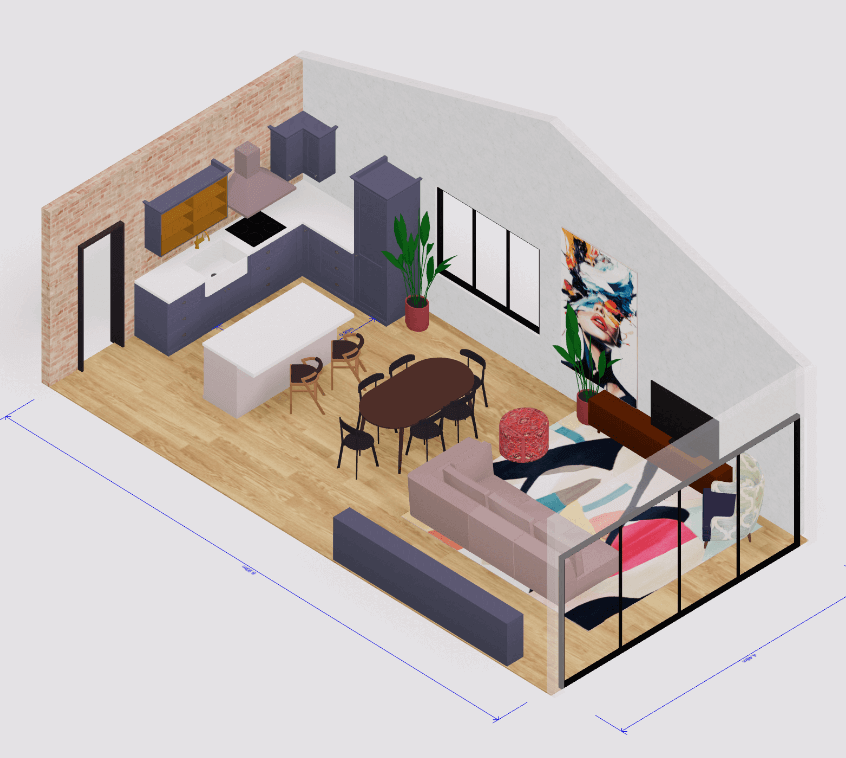 3D house design tool
3D house design tool
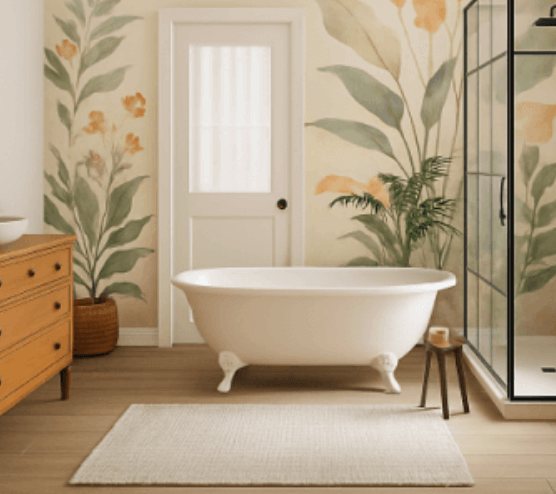
 Color palette generator
Color palette generator
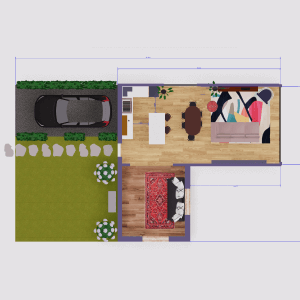 Floor plan creator
Floor plan creator
 Interior design app
Interior design app
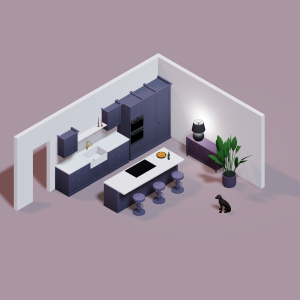 Kitchen design tool
Kitchen design tool
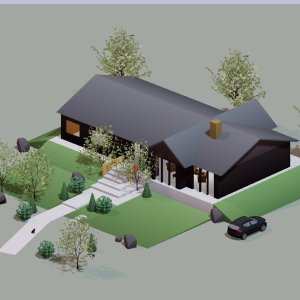 House design software
House design software
 Room designer
Room designer
 Landscape design software
Landscape design software
 Bedroom design
Bedroom design
 Office floor plan creator
Office floor plan creator
.png)



